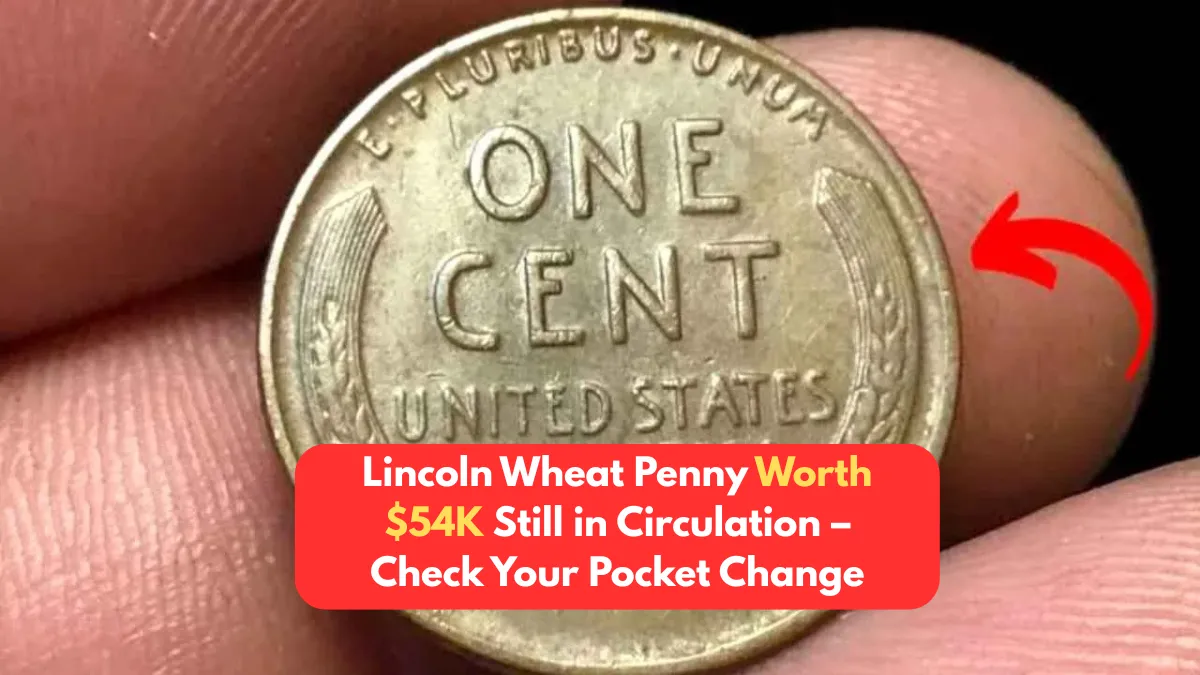Most people wouldn’t think twice about a single penny—after all, it’s just one cent. But what if that humble coin in your pocket was actually worth $54,000? That’s the case with a rare Lincoln Wheat Penny that’s still believed to be floating in everyday circulation. This historic coin, hiding in plain sight, has sparked a surge in interest among collectors and everyday Americans hoping to strike copper gold.
Here’s everything you need to know about this rare penny—and how to tell if you’ve got one.
What Is a Lincoln Wheat Penny?
The Lincoln Wheat Penny was minted from 1909 to 1958 and features two wheat stalks flanking the words “ONE CENT” on the reverse. These coins were the first U.S. pennies to feature a real person—President Abraham Lincoln—and they are among the most iconic coins in American history.
While many Wheat Pennies are common and worth only a few cents, others—due to rarity, condition, or minting errors—are worth thousands.
The $54,000 Lincoln Penny: What Makes It So Valuable?
The coin in question is likely one of the 1943 Bronze Lincoln Wheat Pennies, an accidental minting error that occurred during World War II.
Here’s why it’s so special:
- In 1943, the U.S. Mint switched from copper to zinc-coated steel pennies to save copper for wartime materials.
- However, a few bronze planchets (blanks) from 1942 mistakenly remained in the minting machines.
- As a result, a small number of 1943 Lincoln pennies were struck in bronze, making them incredibly rare.
Estimated Value: Up to $54,000+, depending on condition.
Some in mint state have sold for $250,000 or more at auction.
How to Spot a 1943 Bronze Wheat Penny
Here’s what to look for:
Date: 1943
Color: A reddish-brown or copper tone, rather than silvery gray
Magnet Test: A genuine 1943 bronze penny will not stick to a magnet
Weight: Should weigh about 3.11 grams, not the 2.7 grams of a steel cent
Mint Mark: Look for “D” (Denver) or “S” (San Francisco), but Philadelphia mint with no mark is also valuable
If your 1943 penny is copper-colored and non-magnetic, you could be holding a fortune.
Other Valuable Lincoln Wheat Pennies to Watch For
Even if you don’t find the elusive 1943 bronze cent, there are other valuable Wheat Pennies in circulation:
| Year | Mint | Value (Approx.) | Reason |
|---|---|---|---|
| 1909-S VDB | San Francisco | $700–$4,000+ | Low mintage, designer initials |
| 1914-D | Denver | $200–$3,000+ | Scarce key date |
| 1922 No D | Denver | $500–$10,000+ | Missing mint mark error |
| 1955 Doubled Die | Philadelphia | $1,000–$15,000+ | Dramatic doubling error |
| 1944 Steel Penny | Any | $10,000–$100,000+ | Accidental steel planchet |
Where Might You Find One?
Rare pennies are still being found in:
- Pocket change
- Old coin jars and piggy banks
- Inherited collections
- Rolls of pennies from banks
- Estate sales and flea markets
Many people unknowingly spend these valuable coins, especially if they’re worn or mixed with modern ones. That’s why vigilance and a good magnifying glass can go a long way.
What to Do If You Think You Found One
If you believe you have a rare Wheat Penny:
- Do the magnet test to rule out steel.
- Weigh the coin using a digital scale.
- Examine the date and mint mark carefully.
- Consult a professional coin dealer or submit the coin to a grading service like PCGS or NGC.
- Avoid cleaning the coin—this can reduce its value dramatically.
Final Thoughts: Don’t Dismiss the Penny
That little coin you’ve overlooked for years could be your golden ticket. The 1943 bronze Lincoln Wheat Penny is one of the most famous and valuable error coins in U.S. history—and yes, some are still out there. Whether in a coin roll from the bank or a forgotten jar in Grandma’s attic, these pennies are worth hunting for.
Check your change—you might be holding $54,000 and not even know it.
